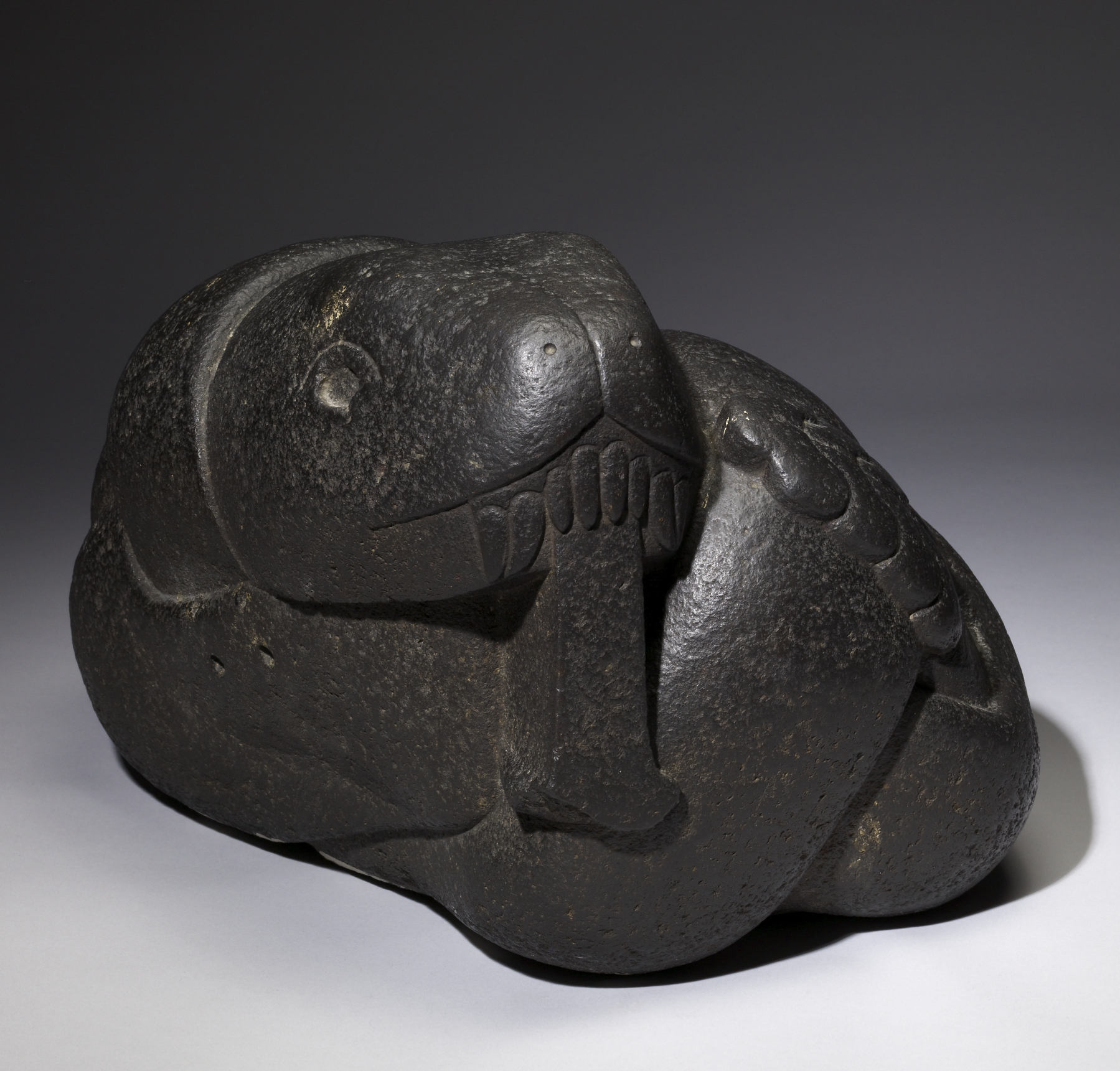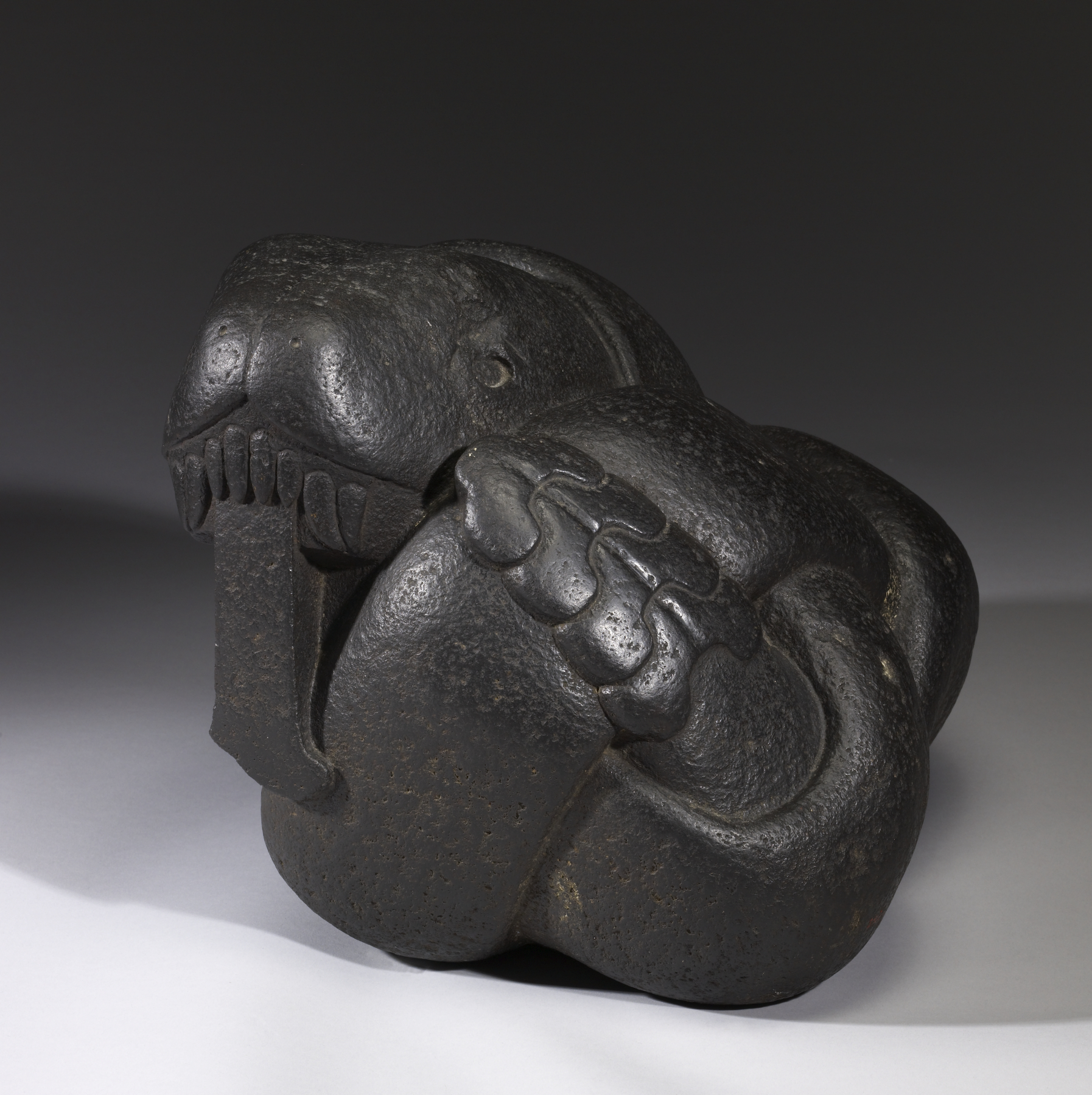Knotted Rattlesnake
(Ancient Americas )
Compact and smoothly polished, this rattlesnake displays typical Aztec sculptural techniques. Both the musculature of this snake's body and its head have been sculpted in great detail. The eyes were probably once inlaid, and ferocious fangs descend from the snake's upper jaw. Snakes were powerful symbols throughout Mesoamerican history, linked with the sky, rain, and agriculture. Aztecs may have seen the snake's shedding of its skin as a metaphor for the cyclical nature of life, death, and rebirth.
Provenance
Provenance (from the French provenir, 'to come from/forth') is the chronology of the ownership, custody, or location of a historical object.
Édouard Pingret, French artist, between 1850-1855 [1]; inherited by his daughter, 1875; sold in a public auction at her death, 1909 [2]. Acquired by Dikran Kelekian, 1909 and sold to Henry Walters, Baltimore, 1911 [3]; by bequest to Walters Art Museum, 1931.
[1] Édouard Pingret Notebook, Quai Branly Museum, Pais (MQB 80.2005.8.1, p.13).
[2] "Édouard Pingret, Un Coleccionista Europeo de Mediados del Siglo XIX," Marie-France Fauvet-Berthelot, Leonardo Lopez Lujan, 2012, p.72.
[3] Received from Paris via the SS "Ulstermore," September 22, 1911, Case 48. See Mr. Anderson's Book p. 59 and p. 66, "1 Stone Serpent found in Mexico."
Exhibitions
| 2002-2010 | Art of the Ancient Americas. The Walters Art Museum, Baltimore. |
| 1971-1972 | World of Wonder. The Walters Art Gallery, Baltimore. |
| 1968 | The Art of Ancient and Modern Latin America. Isaac Delgado Museum of Art, New Orleans. |
| 1948 | Themes and Variations in Painting and Sculpture. Baltimore Museum of Art, Baltimore. |
Geographies
Mexico (Place of Origin)
Measurements
H: 11 1/4 x W: 16 in. (28.5 x 40.64 cm)
Credit Line
Acquired by Henry Walters, 1911
Location in Museum
Accession Number
In libraries, galleries, museums, and archives, an accession number is a unique identifier assigned to each object in the collection.
In libraries, galleries, museums, and archives, an accession number is a unique identifier assigned to each object in the collection.
29.2




